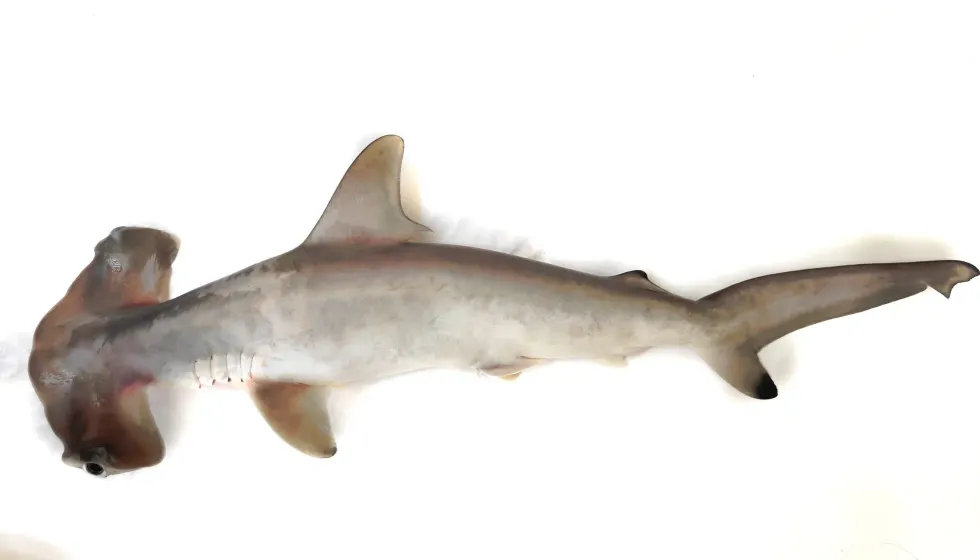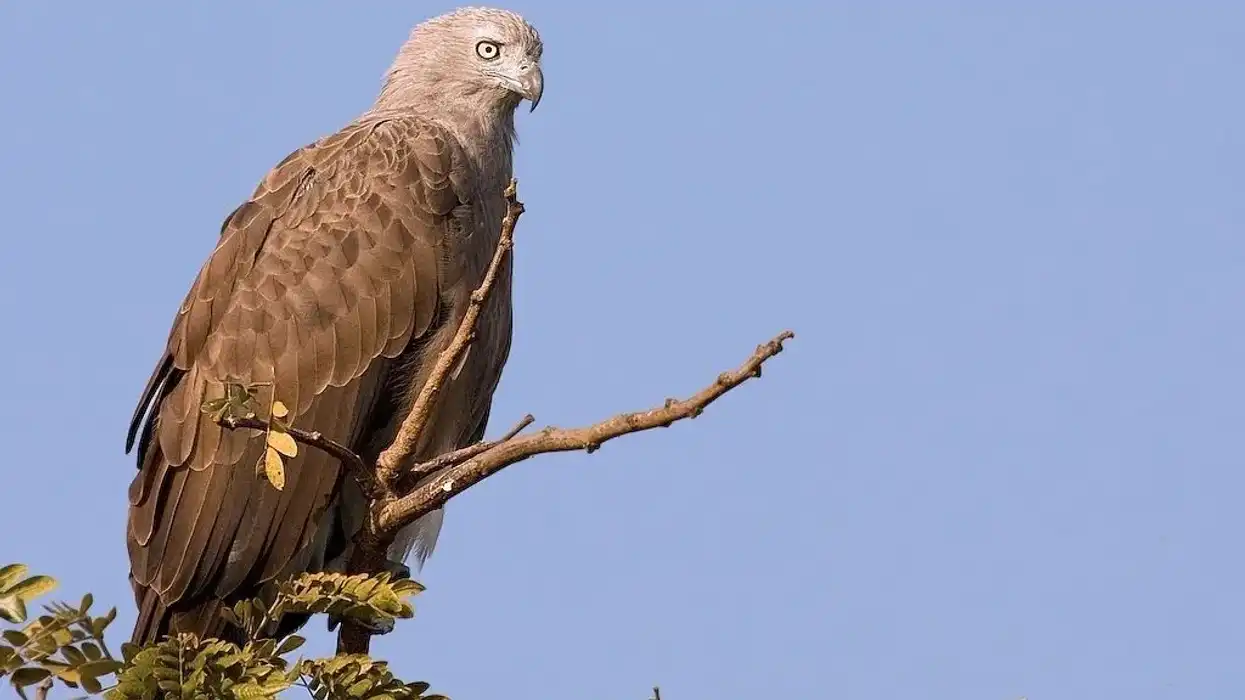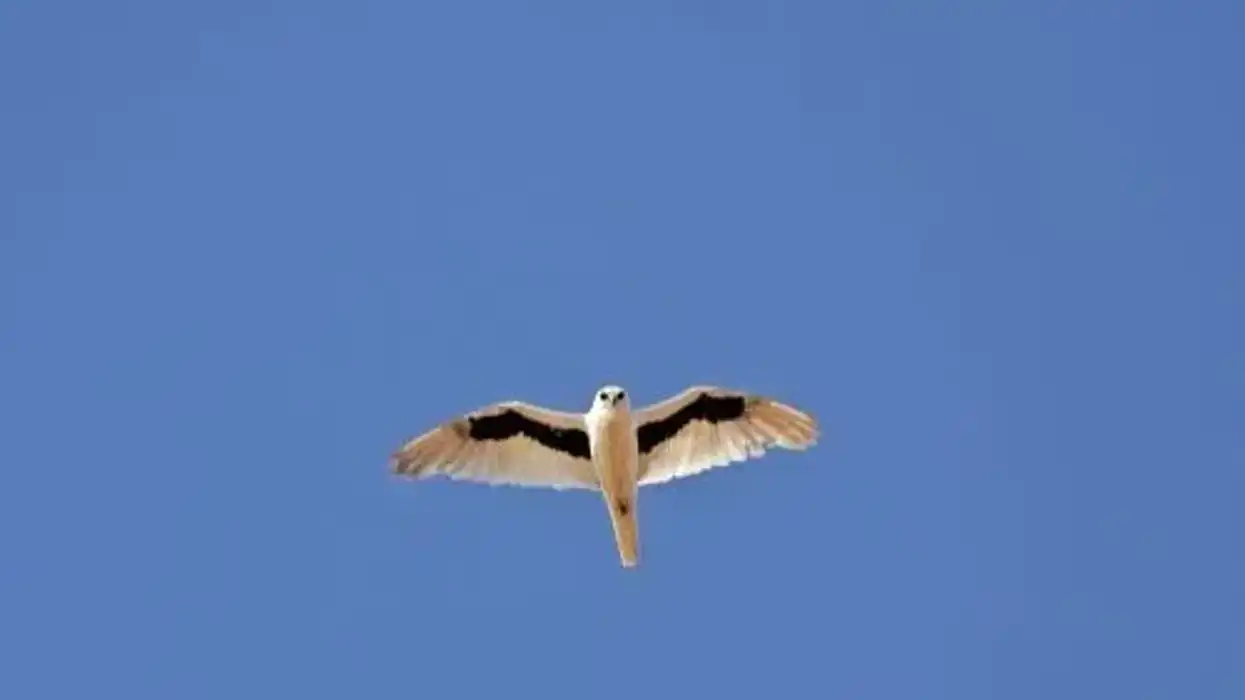The winghead shark (Eusphyra blochii) is a hammerhead shark species of the family Sphyrnidae. This slender brown to gray-colored shark got the common name 'winghead' from their cephalofoil or large 'hammer' shaped head which grows as wide as half of this shark's total length.
The function of this part is not known but it may help improve their senses by improving surface area.
Marcus Elieser Bloch, a German naturalist, described this shark in 1785 and referred to it as Squalus zygaena (smooth hammerhead), which was later negated.
Theodore Gill placed these sharks in the genus Eusphyra, which is a Greek word consisting of 'eu', meaning 'true' or 'good' and 'sphyra', meaning 'hammer'. This is the only species within the genus Eusphyra.
The Sphyrnidae family is a group of hammerhead sharks that are named for their unusually distinctive structure that laterally extends on their head. There are two genera within this species, Sphyrna and Eusphyra. Fossil evidence of these species shows that hammerheads might have evolved in the Paleocene.
If these facts were interesting, check out some facts about reef sharks and nurse sharks.
Winghead Shark Interesting Facts
What type of animal is a winghead shark?
The winghead shark (Eusphyra blochii) is a hammerhead shark of the order Carcharhiniformes and phylum Chordata. Few other common names of the winghead shark are slender hammerhead, arrow-headed hammerhead shark, and arrowhead.
This shark has great depth perception and detects the movements of prey. This shark species is not harmful to humans. Compared to other usual sharks, this species is more prone to getting entangled in fishing nets.
What class of animal does a winghead shark belong to?
The winghead shark (Eusphyra blochii) belongs to the class of Chondrichthyes of animals.
How many winghead sharks are there in the world?
The exact population distribution of Eusphyra blochii in the world is not available. However, as per IUCN, the population of rays and sharks in the world has decreased by 20% since 2003 which is severe in the Indo-Pacific region.
Where does a winghead shark live?
The habitat range of Eusphyra blochii extends in the western and central Indo-West Pacific from the Persian gulf eastward through to South and Southeast Asia towards Northern Australia and New Guinea. This distribution range also extends to the north of Taiwan and also to the south to the Montebello Islands off Western Australia.
What is a winghead shark's habitat?
The range of habitat of Eusphyra blochii sharks consists of tropical shallow waters that are close to shore and also enter estuaries.
Who do winghead sharks live with?
Eusphyra blochii sharks live on their own or in small schools.
How long does a winghead shark live?
The average maximum lifespan of a Eusphyra blochii shark is 21 years.
How do they reproduce?
Like the other shark species of this family, winghead sharks are also viviparous with the development of the young pups sustained by a placental connection to their mother. The adult winghead shark female has two functional uteri and a functional ovary on the right.
During pregnancy, compartments for each ovary are formed. The breeding season occurs in the monsoon in July and August.
The males bite at the side of the body of females to prepare for copulation. Females produce young pups every year. The litter range is around 6-25 pups, which increases depending on the female's size.
The gestation period of these sharks is around 10-11 months off Northern Australia and eight to nine months off western India. It has been reported that pregnant females fight each other.
The embryo develops similar to other sharks with nourishment from the yolk. The fins and cephalofoil begin to form at a length of 1.6-1.8 in (4.0-4.5 cm) and the yolk supply runs low at an embryo length of 4.7-6.3 in (12-16 cm).
Folds appear on the uterine wall and yolk sac that later forms into the placenta. Their cephalofoil's blades fold along the body length and the external filament of gill extends from their gill slits.
Later the dermal denticles, first teeth, and as the embryo grows, it starts to resemble the adult.
Newborn pups are 13-19 in (32-45 cm). These young ones reach sexual maturity at a body length range of 3.6-3.9 ft (1.1-1.2 m) for females and 3.3-3.6 ft (1.0-1.1 m) for males.
What is their conservation status?
The conservation status of winghead sharks is evaluated as Endangered by the IUCN. Regional assessment in Australian waters where these sharks are caught infrequently is given as Least Concern by IUCN.
The fishing of these species off India, Indonesia, and the Gulf of Thailand for their fins, meat, offal, and liver has caused a decrease in the population distribution of this species.
Winghead Shark Fun Facts
What do winghead sharks look like?
Winghead sharks of the family Sphyrnidae have streamlined, slim bodies with falcate (sickle-shaped), narrow, and tall first dorsal fin that has their origins at bases rather than their small pectoral fins. The much smaller second dorsal fin has an originating point over the third caudal of the base of their anal fin.
Their body is brown-gray to gray with off-white underparts and without fin markings. At the dorsal origin of the caudal fin, the caudal peduncle has a length-wise groove.
The lower caudal fin lobe is smaller compared to the upper lobe. This upper lobe has a notch closer to the tip in the trailing margin.
This species has overlapping dermal denticles on their skin with three horizontal ridges on each, which leads to marginal teeth. Their wing shaped-head or cephalofoil has a pair of swept-back, narrow, and long blades.
The cephalofoil is almost half the size of the total body length of this species. This species has long nostrils.
There is a slight indentation in the middle-front of the cephalofoil and on each side of the front nostrils, there is a gentle bump. Each nostril almost protrudes along the complete leading margin of each blade and is almost twice the width of the arched mouth.
The circle-shaped eyes with protective nictitating membranes of this species are placed at the forward outer corners of their cephalofoil. On each side of their mouth, there are 14 lower and 15-16 upper tooth rows.
They have smooth-edged, small teeth that have triangular cusps. Their five pairs of gill slits are visible with the fifth one located over the origins of pectoral fins.

* Please note that this is an image of a scalloped hammerhead shark. If you have an image of a winghead shark, please let us know at hello@kidadl.com.
How cute are they?
These Endangered sharks, according to the IUCN, with a wing-shaped cephalofoil are not considered cute.
How do they communicate?
This Endangered species communicates through chemical release, visuals, body language, sense, and electric fields.
The location of their eyes provides them with a binocular field view of around 48°, this gives a great depth perception during hunting. Among all the other hammerheads, this species has the longest nostrils and the longer the nostril, the greater the presence of chemosensory receptors that aid with odor sensing.
The ability to detect movements and electric fields of their prey might be increased by the presence of cephalofoils that provide a larger surface area for their mechanoreceptive lateral line and electroreceptive ampullae of Lorenzini.
How big is a winghead shark?
The maximum body length of this species is 73 in (186 cm) and the total length of immature pups is 13-19 in (32-45 cm). This species is almost three times smaller than small whale sharks.
How fast can a winghead shark swim?
This species of hammerhead sharks can swim at a maximum speed of 25 mph (40 kph).
How much does a winghead shark weigh?
The weight of hammerhead sharks has not yet been documented.
What are the male and female names of the species?
There is no specific name given to the male and female winghead sharks.
What would you call a baby winghead shark?
A winghead shark baby is called a winghead shark pup.
What do they eat?
The winghead shark diet is carnivorous. They feed on small bony fishes, crustaceans, and cephalopods. They eat shrimp, crabs, cuttlefish, octopus, and squid.
Are they dangerous?
No, this species is not dangerous to humans.
Would they make a good pet?
No, this species would not make great pets.
Did you know...
The relatives of winghead sharks, scoophead sharks, have mallet-shaped heads and they measure up to 5 ft (1.5 m).
Do winghead sharks use sonar?
This species of the family Sphyrnidae can detect movements and electric fields of their prey and this ability might be increased by their cephalofoils that provide a larger surface area for their mechanoreceptive lateral line and electroreceptive ampullae of Lorenzini.
Why are they called winghead sharks?
This species is named winghead sharks because of their wing-like head that is almost half the length of their body.
Here at Kidadl, we have carefully created lots of interesting family-friendly animal facts for everyone to discover! For more relatable content, check out these tiger shark facts and sandbar shark facts for kids.
You can even occupy yourself at home by coloring in one of our free printable shark coloring pages.









